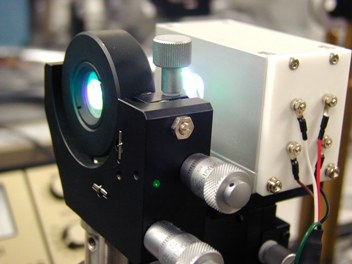Research
Research Interest
Protein dynamics are intimately connected to the structure/function relationship of biological systems. In numerous biological processes, the ensuing protein structural changes accompanying a reaction at a specific site must spatially extend to the mesoscopic dimensions of the protein to achieve a biological function. The molecular mechanism of cooperativity in oxygen binding of hemoglobin is one of the classical problems in this aspect. The large-amplitude motions at the quaternary level, which form a communication link at the subunit interface, are driven by changes in the tertiary structure upon ligation.
Protein dynamics spans over a wide range of time scales. To answer questions on protein dynamics, we need the concatenation of experimental results recorded over many orders of magnitude of time. In this regard it is important that a single experimental technique can examine protein structures evolving from the earliest moments, such as the picosecond regime, toward time scales that are highly relevant to biological functions, such as the microsecond or millisecond regimes. One might ask whether ultrafast spectroscopy can provide anything to understand protein systems. There are some good reasons for us to believe that the answer is positive. One method for studying the dynamic motions of proteins is to pursue the ensuing relaxation after shifting a protein from equilibrium. If we use short pulses to initiate a very rapid photoreaction at an active site, immediately after the start of a reaction, the result is a metastable structure whose active site is different but the tertiary and quaternary structures of the protein are similar to the original state. The surrounding “protein solvent” is now the structural variable. A short probe pulse following the initiating pulse provides direct information on the relaxation of this metastable form into the equilibrium protein structure. In this way, the quickest responses of proteins can be monitored by ultrafast spectroscopy. Another feature to be noted about ultrafast spectroscopy is the possibility of studying energy dissipation in proteins, which is very important to understanding reactions in proteins. In general, energy dissipation occurs in the sub-picosecond to picosecond regime in the condensed phases. Ultrafast spectroscopy is required in order to study how the deposited energy dissipates in proteins. In addition to such relaxation processes, there are conformational fluctuations around the equilibrium points. The tertiary structure is undergoing fluctuations on a time scale of hindered molecular rotations. These motions can also be studied by various ultrafast spectroscopic techniques.
Research Subjects

- Structural chemistry on allosteric proteins
- Functionally-important structural fluctuation of protein
- Photoscience of protein
- Development of techniques for time-resolved spectroscopy

